Hey, are you wondering why your plants aren’t bursting with blooms? It’s frustrating, right, but let’s figure this out together. Start by checking if they’re getting at least six hours of direct sunlight daily; less than that, and they’re basically snoozing. There’s more to it, though, from nutrients to watering tricks, so stick with me to uncover the fixes for those shy flowers.
Contents
Insufficient Sunlight Exposure
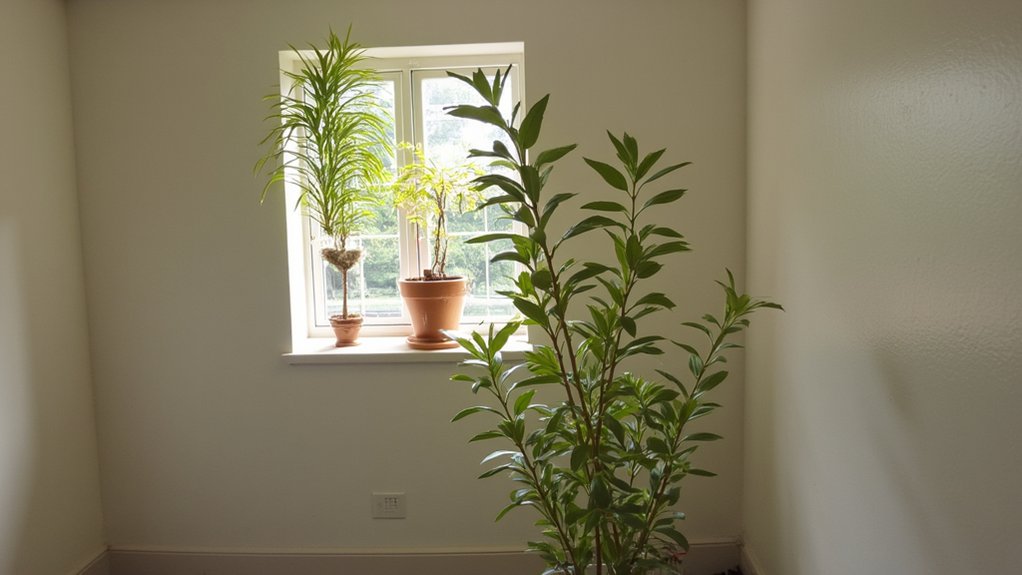
While it might seem obvious, insufficient sunlight exposure can really mess with your plants’ ability to flower. You’ve gotta understand, most flowering plants need at least 6 hours of direct sun daily to trigger blooming. Without it, they’re just stuck in survival mode, not producing buds.
Check your garden’s light levels with a simple trick: observe shadows around midday. If you don’t see sharp, defined shadows for several hours, your spot’s likely too shady. Move potted plants to a sunnier location, ideally south-facing if you’re in the northern hemisphere. For garden beds, consider trimming nearby trees or shrubs blocking light, but do it gradually over a week to avoid shocking your plants. Keep monitoring, and adjust as needed!
Nutrient Deficiency Issues
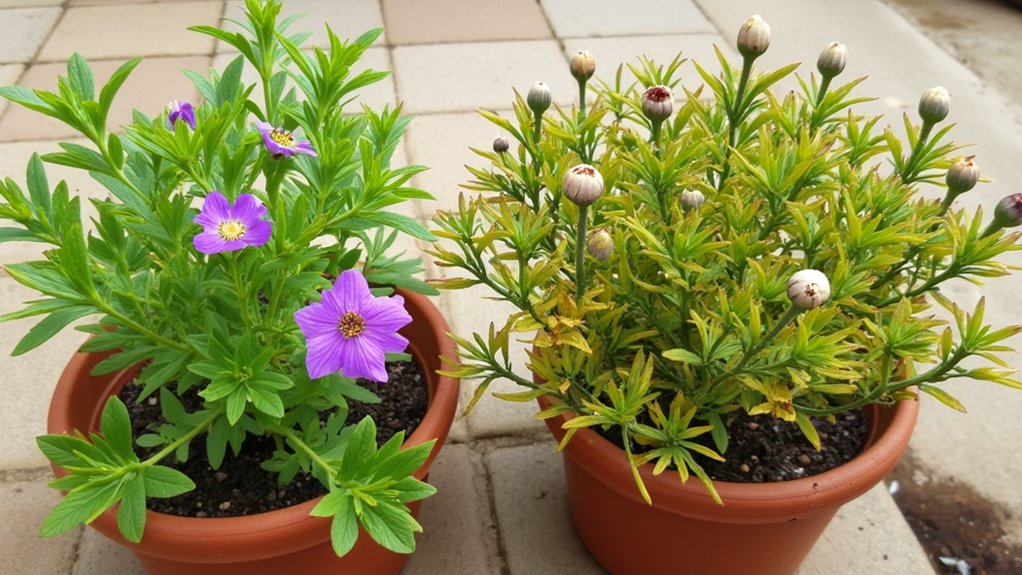
Hey, let’s shift gears and talk about nutrient deficiency issues, another big reason your plants might not flower after sorting out sunlight. If your plants lack key nutrients, they can’t produce blooms, plain and simple. Check for yellowing leaves or stunted growth—classic signs of trouble.
Nitrogen, phosphorus, and potassium are the big three for flowering. If phosphorus is low, blooms won’t form, so grab a fertilizer with a higher middle number, like 10-20-10. Apply it every 4-6 weeks during the growing season, following package instructions for dosage—usually about 1 tablespoon per gallon of soil. Test your soil with a kit, available at most garden centers, to pinpoint deficiencies. Fix these gaps, and you’ll likely see buds soon!
Improper Watering Techniques
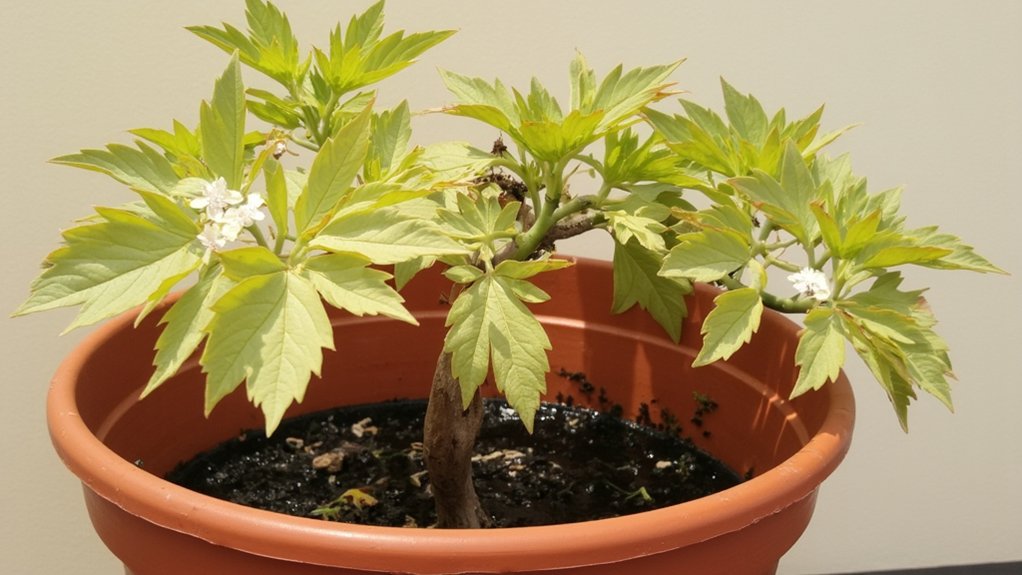
As we plunge into improper watering techniques, let’s tackle another common culprit behind plants not flowering. You might be drowning or starving your plants without realizing it. Overwatering can suffocate roots, preventing oxygen flow, while underwatering stresses them, halting bloom production.
Check your soil before watering—stick your finger in about 2 inches deep. If it’s dry, water thoroughly until it drains from the bottom, but don’t let pots sit in soggy trays. Aim for consistency; most flowering plants need watering every 5-7 days, depending on weather and pot size.
Also, watch the time of day. Water early in the morning to avoid evaporation and fungal issues. Adjust based on your plant’s needs—some like drier conditions, others crave more. Keep observing, and you’ll get it right!
Incorrect Pruning Methods
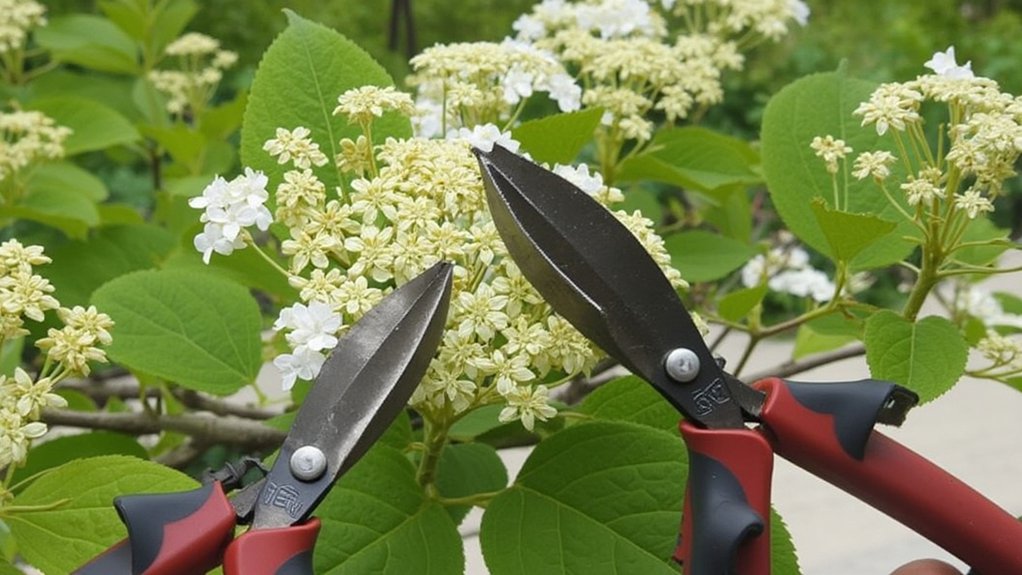
Before we dive deeper, let’s tackle incorrect pruning methods, another sneaky reason your plants aren’t flowering. You might think trimming is straightforward, but mistakes can stop blooms cold. Pruning at the wrong time, like cutting back spring-flowering shrubs in late winter, removes buds before they open.
Here’s the fix: time it right. For most flowering plants, prune right after they bloom, not before, to avoid snipping off next season’s flowers. Use sharp shears, and cut just above a leaf node, about ¼ inch up, to encourage growth. Don’t overdo it either—remove only dead or damaged bits, no more than a third of the plant. Stick to this, and you’ll see those buds popping up soon!
Temperature Stress Effects
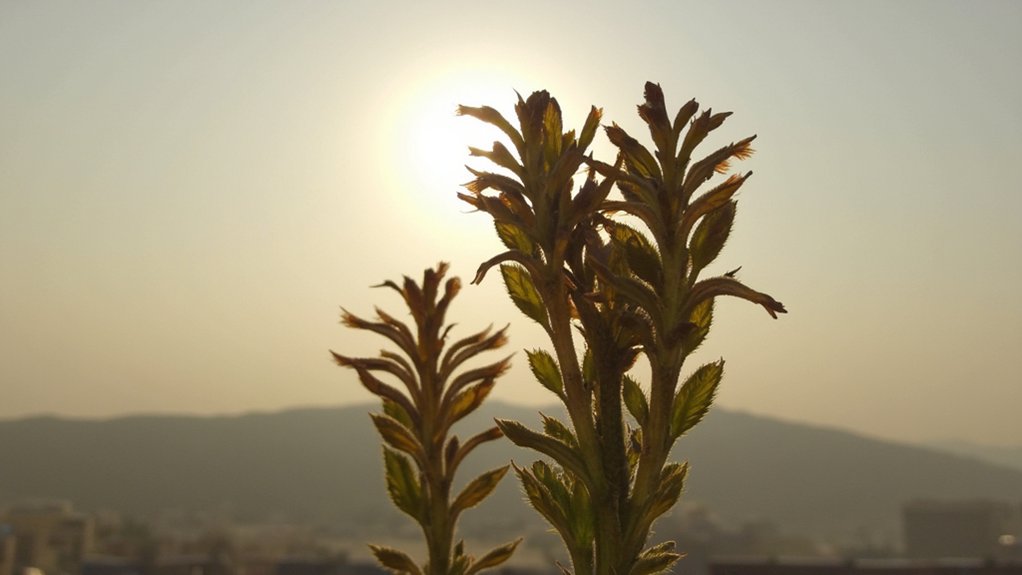
While we’re on the topic of plant woes, let’s tackle how temperature stress can mess with flowering. You’ve gotta know, plants are picky about their comfort zone. Extreme heat above 85°F, or chilly dips below 50°F, can halt bud formation, stressing your plant out.
Keep an eye on those temps, especially during critical growth phases like spring. If it’s too hot, provide shade with a cloth or move pots to cooler spots. For cold snaps, cover plants with frost blankets or bring them indoors overnight. Check forecasts daily to stay ahead.
Also, avoid sudden changes by acclimating plants slowly if you’re moving them. Gradual shifts, over 5-7 days, prevent shock. Stick to this, and you’ll help blooms thrive.
Pest Infestation Problems
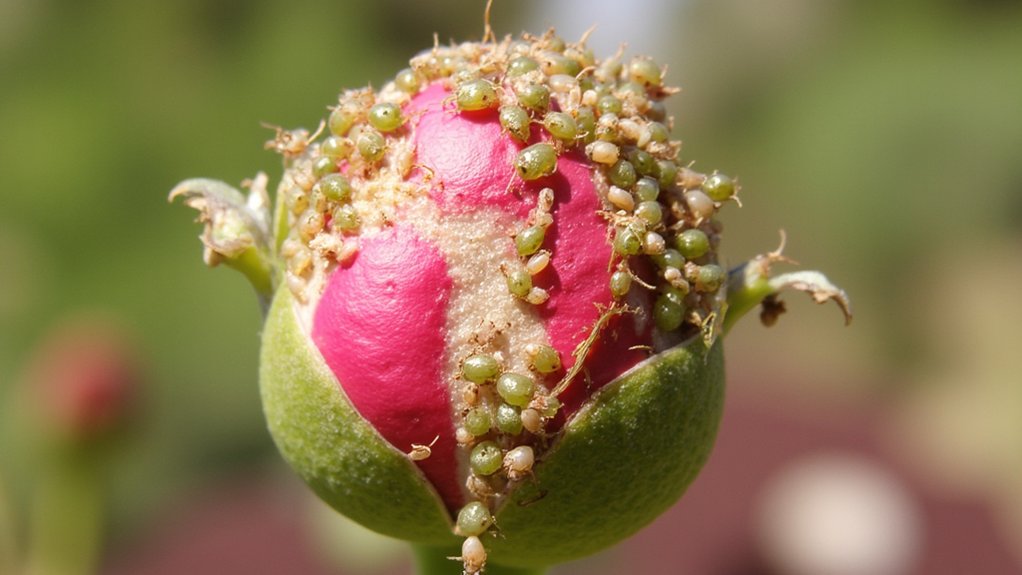
Now that we’ve covered temperature stress, let’s explore how pests can wreck your plants’ flowering potential. You’ve gotta watch out for tiny invaders like aphids, spider mites, and whiteflies. These pests suck sap from buds, weakening your plants and stopping blooms before they start.
Check your plants daily, especially under leaves, for sticky residue or tiny webs. If you spot trouble, act fast—mix a solution of 1 teaspoon dish soap with 1 quart of water. Spray it directly on infested areas every 3 days for a week, ensuring full coverage. This suffocates pests without harsh chemicals.
Don’t let bugs win; stay vigilant. Inspect new plants before adding them to your garden, and isolate any suspicious ones for 7 days to prevent spread.
Poor Soil Quality
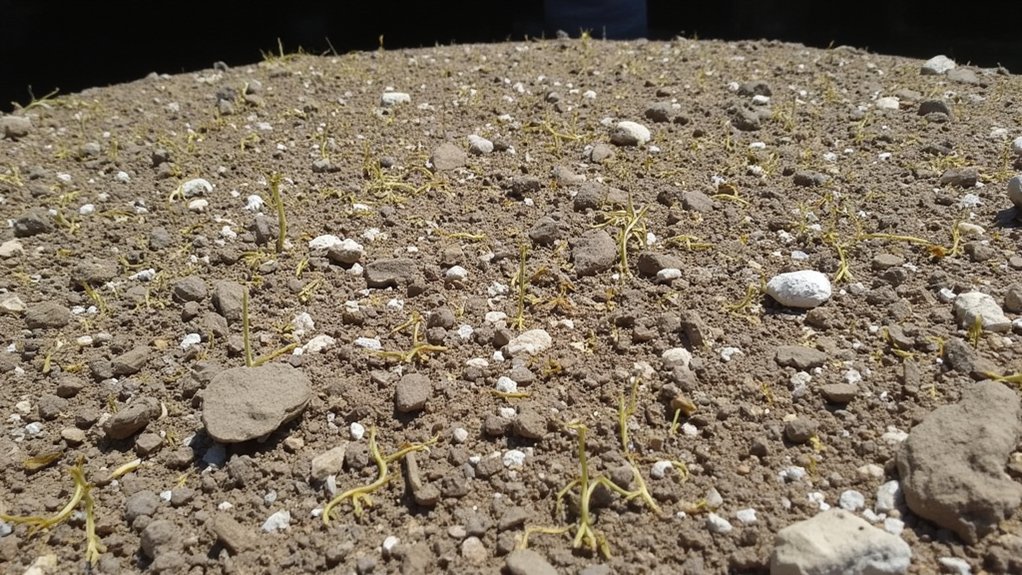
After tackling pest issues, let’s plunge into how poor soil quality can mess with your plants’ flowering. If your soil lacks nutrients, your plants can’t thrive, plain and simple. Poor soil often means low nitrogen, phosphorus, or potassium, which are essential for blooms.
Inadequate Pollination Support
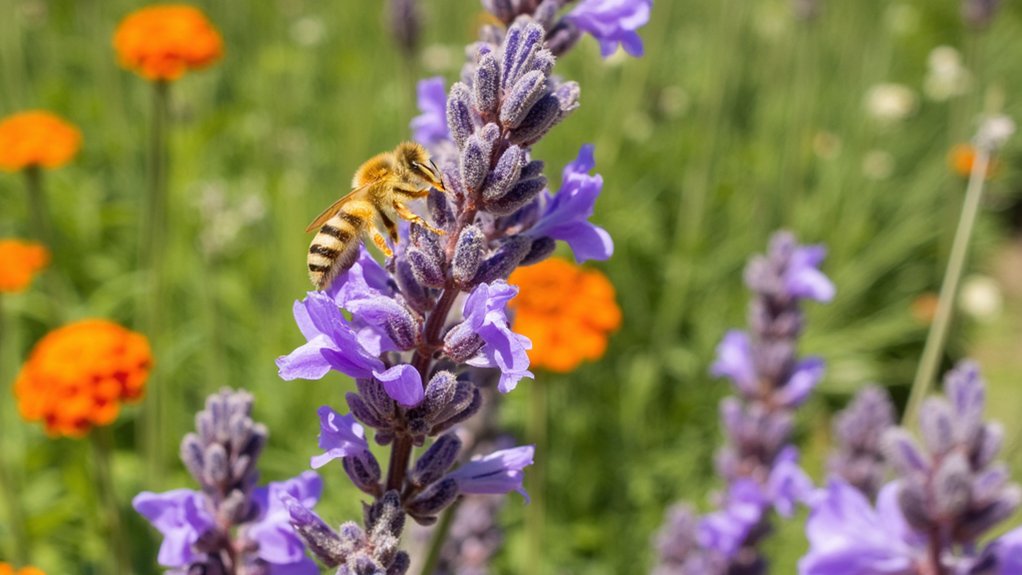
Even with great soil, your plants might still struggle to flower if pollination support isn’t up to par. You’ve got to guarantee pollinators, like bees or butterflies, can access your garden. Without them, many plants can’t set fruit or even bloom properly.
Check if you’re attracting enough helpers by planting nectar-rich flowers nearby, such as marigolds or lavender. Place these within 10-15 feet of your struggling plants to draw pollinators in. Also, avoid pesticides during peak bloom times, roughly mid-morning to early afternoon, to keep these critters safe.
If natural pollinators aren’t showing up, try hand-pollinating with a small brush. Gently transfer pollen between flowers daily for about a week, and you’ll likely see results soon.
Wrong Pot Size
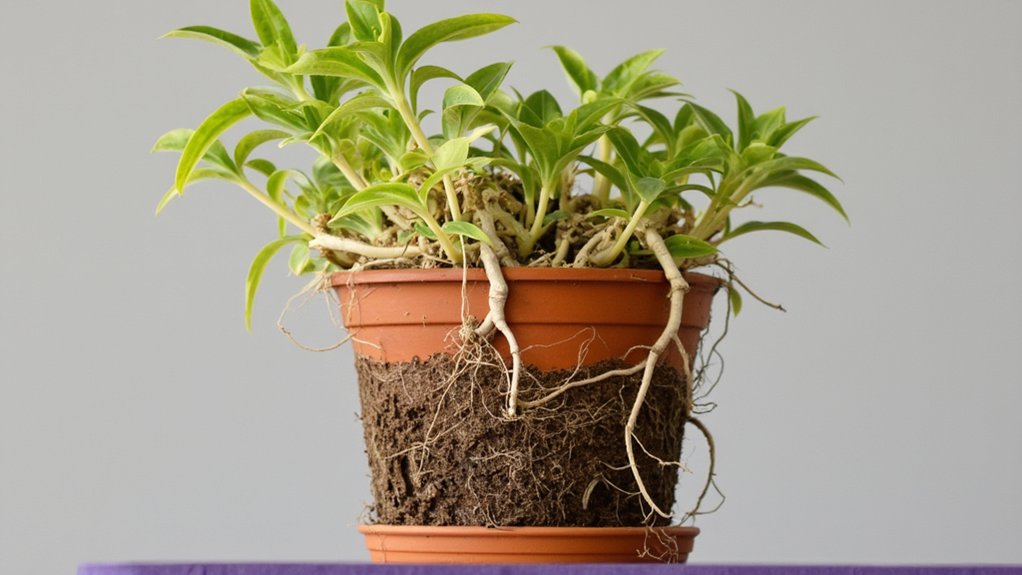
While pollination issues can stump your garden, don’t overlook the impact of pot size on flowering. If your pot’s too small, roots get cramped, stunting growth and blocking blooms. Check if roots are circling the bottom; that’s a red flag.
A pot that’s too big isn’t any better, though. Excess soil holds too much water, risking root rot and stressing your plant. Aim for a pot 1-2 inches wider than the root ball, ensuring drainage holes are present.
Repot every 1-2 years, ideally in spring, to refresh the space. Gently loosen roots, add fresh soil, and water lightly after. Stick to this sizing rule, and you’ll avoid pot-related pitfalls. Your plants will thank you with vibrant flowers soon enough!
Unfavorable Humidity Levels
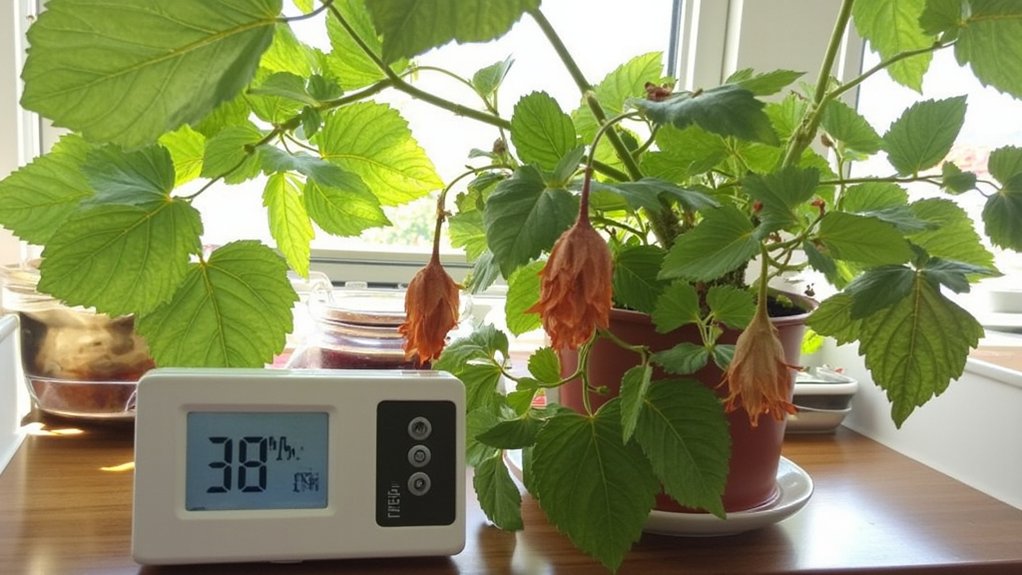
Let’s shift focus from pot size to another sneaky factor: humidity levels that just don’t work for your plants. Many flowering plants, like orchids or hibiscus, need specific humidity, usually between 50-70%, to bloom well. If it’s too dry, below 40%, buds might not form at all.
